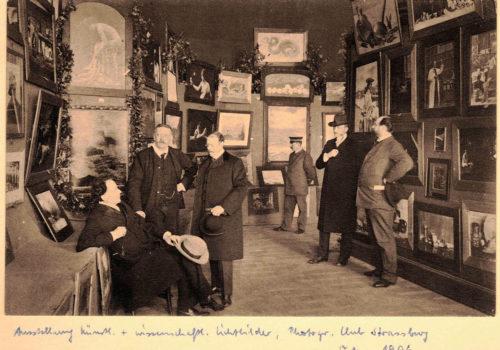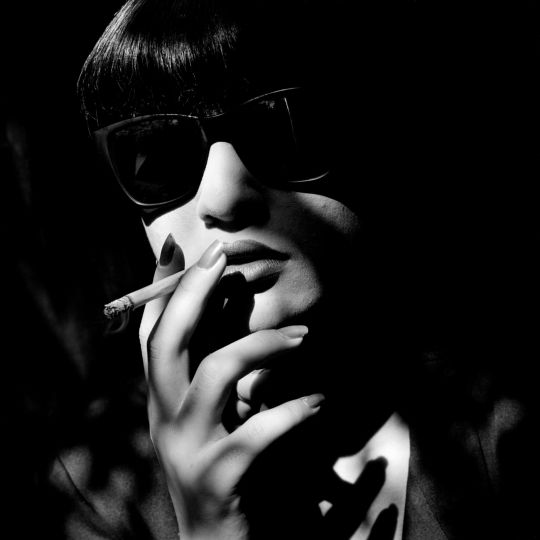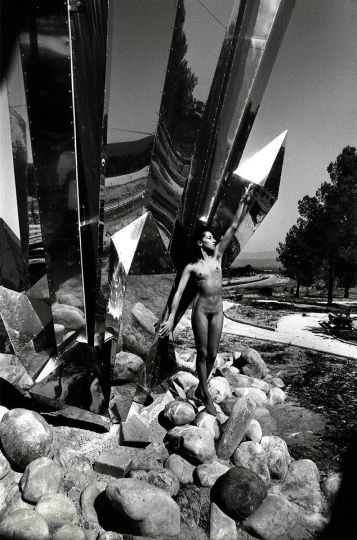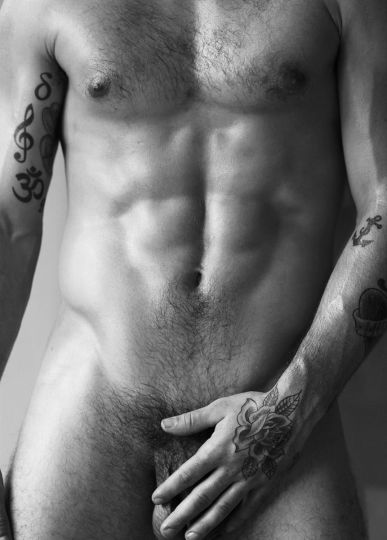This month, at his request, Philippe Lutz is writing Alain Hardy‘s column dedicated to the history of nude photography books!
The most notable exhibition in Alsace before the First World War was undoubtedly that organized in 1906 by the Photographischer Klub Strassburg. In a prestigious location the salons of Château Rohan –, 600 prints, an inauguration with great fanfare, an illustrated catalog, excellent media coverage: everything contributed to making it an important event. Its master builder was a certain Hermann Ludwig von Jan. He alone exhibited more than 200 prints, including several dozen large female nudes: unheard of at that time in Alsace, and undoubtedly enough to give the event a little flavor of scandal.
Who is this von Jan?
Born in Frankfurt in 1851, Hermann Ludwig von Jan moved to Strasbourg in 1881, where he lived until his death in 1908. Professionally, he was an historian, author of a good dozen books, several of which related to Alsatian history and culture. As for photography, he was a passionate amateur, who devoted himself almost exclusively to the nude.
We begin to follow his trail in the early 1900s, where he exhibited in various salons. The writer Bernard Shaw in particular noticed his work, which he compared to that of the painter Jean-Jacques Henner, a fine reference… Our man was published for the first time in 1902 in a collective work by Charles Klary, La photographie du nu, in alongside the best specialists of the time: Le Bègue, Bergon, Lemoine, Boissonnas, Demachy, Puyo, the Count of Clugny, etc. His activity in these years 1902-1903 was intense. He exhibited all over Europe, mainly nudes: London, Graz, Nice, Bremen, Hamburg, Saint Petersburg, etc. He won medals and diplomas and appeared extensively in critical reviews.
But things got really serious in 1904. In collaboration with an art historian, Bruno Meyer, he published, in two volumes, an innovative book: Das lebende Modell. While until now most nude books were looking for pretexts – a work intended “for mothers, doctors and artists”, books showing human types or the inadequacy of fashion to the female body – von Jan published the first books of artistic nude which claims to be such. The text/images relationship was innovative: the photographs (33 are by von Jan, and 7 by Hans Hildenbrand) did not illustrate Bruno Meyer’s point, it is the text here which comments on the photographs. The autotype prints, stuck on plum-colored boards and protected by fine paper, show young women photographed in the studio or outdoors. The tone is still quite pictorialist. Everything contributed to making the book a luxury item: the very large format (40 x 30 cm), the quality of the paper, the two-color printing process.
One could imagine that von Jan enjoyed a well-deserved rest after this editorial coup. It is not so. That same year, 1904, three other works were released. One was a more affordable book, Weibliche Schönheit, which presented 62 photographs. Another came in the form of a new deluxe edition, Weibliche Grazie, in five volumes bound in Japanese style. Von Jan signed 38 of the 100 photographs, alongside 7 other photographers, several of whom were present in Klary’s book. Finally, in June, a French translation of Weibliche Schönheit was launched, in 25 deliveries. Published under the title La grâce féminine, the edition was greatly expanded: von Jan showed 160 photographs, supplemented by 56 photographs by different authors. All these works were the subject of advertising campaigns, both in Germany and in France, and even in the United States. If the number of von Jan’s photographs had increased greatly from one publication to another, his repertoire had also been enriched with new photographs, taken outdoors, particularly in the snowy landscapes of the Alps.
Finally, as if this editorial frenzy was not enough for his happiness, von Jan also changed his life. A widower since 1894, he liked to walk in the Vosges with his son Eduard and often stayed on a farm in Lautenbach-Zell. He fell in love with the daughter of the house, Mélanie, sent her to London to complete her education and joined her to marry her on August 25, 1904. On the occasion of their honeymoon, the couple discovered the archipelago of the Scilly Island, at the tip of Cornwall. It was love at first sight for this end of the world, with its heavenly landscapes and formidable storms. A love at first sight that reoriented von Jan’s photographic work, and sealed their destiny.
In 1905, when an expanded reissue of Weibliche Schönheit appeared, in two volumes or 25 issues, von Jan continued his activity at a sustained pace. He exhibited, among others, in Paris, Marseille, Vienna, Darmstadt, and introduced Mélanie to photography. In the spring, the couple returned to the Scilly islands , where they made friends with several other photographers. The rocky shores of St Mary’s provide von Jan with a new source of inspiration. Although he did not publish new work in 1906, he devoted himself to the major Strasbourg exhibition mentioned above, and in 1907 won first prize in a competition organized by the monthly Die Schönheit, whose founder was a tireless activist for the culture of the free body and naturism. His photographs now showed nudes in relation to the brutal force of the sea, far from his first pictorialist works.
In 1908, in the spring, like every year, the couple returned to St Mary’s. During September, von Jan accompanied his wife to London who was returning home. No doubt the couple went to the inauguration of the annual exhibition of the Royal Photographic Society, where Mélanie exhibited for the first time. She then left alone for Munich, while von Jan stayed . October 13 was the tragedy. While he went out to track the wave, and undoubtedly take nude photographs, his hat was spotted, floating on the waves, by a young woman who accompanied him. She ran to call for help. The next day, von Jan’s body was discovered washed up on the beach. His passion won out. The English press, the Strassburger Neueste Nachrichten and numerous photo journal titles widely reported his disappearance. Melanie returned to St Mary’s to bury her husband.
Although the Verlag der Schönheit publishing house continued to distribute his nudes throughout the 1920s, von Jan’s work has now fallen into obscurity. It deserves to be drawn from it for several reasons. With the publication of these works, which feature more than 200 different nude photographs, H. L. von Jan was in fact one of the major initiators of a new genre that will flourish in the history of publishing: le livre de nu artistique. As such, via his network of critics and editors, he has contributed to the notoriety of several nude photographers with whom he shares certain publications. His vision of the female body, initially aesthetic, in a “French style”, gradually became part of the German movement of Lebensreform and Freikörperkultur (FKK).Beyond the pictorialist nude he had explored, he ended up favoring the “natural” nude, where he integrated his models into their environment. He thus initiated a photography practice foreign to any eroticism, quite different from that of the “nudist trio”, Le Bègue, Lemoine and Bergon, whose view of the body was more scholarly and mannerist.
Philippe Lutz
Short version of an article initially published in La Revue de la Bibliothèque Nationale Universitaire de Strasbourg.
The full article is available here: https://journals.openedition.org/rbnu/6177
















